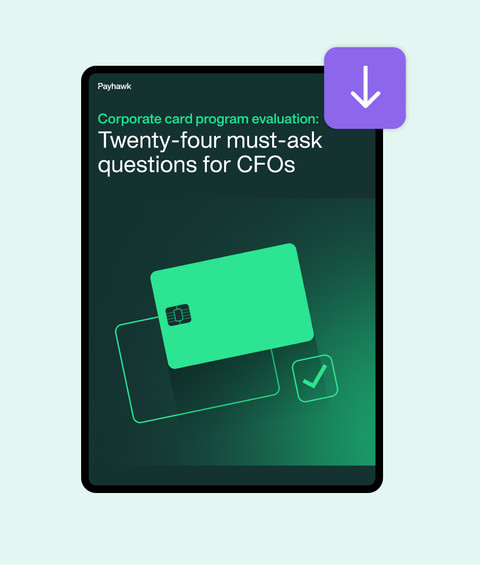
Changes are coming to GAAP: IFRS 15 Revenue from Contracts with Customers



The Financial Reporting Council (FRC) released Financial Reporting Exposure Draft (FRED) 82 in December 2022, with the objective of keeping the UK Generally Accepted Accounting Practice (GAAP) up to date and aligned with the current business landscape.
By submitting this form, you agree to receive emails about our products and services per our Privacy Policy.
IFRS 15 Revenue from Contracts with Customers is one of the biggest changes in the latest round of proposals for UK GAAP by the Financial Reporting Council (FRC).
The revisions outlined in FRED 82 bring about important changes to FRS 102, aligning it with current IFRS SME practices. These updates aim to enhance the quality and clarity of financial reporting for users.
In this post, we look at the changes that specifically affect revenue recognition and reporting and in particular customer contracts. We cover:
- Preparing for the new standard
- Revenue recognition
- Contract modifications
- Disclosures
- Preparing for the new standard
- Summary: Fundamental changes require rapid action

Revenue recognition
The new standard introduces a clear, five-step model for revenue recognition from contracts with customers. It provides guidance on how to identify, measure, and recognise revenue, ensuring consistency and comparability across different industries.
In brief, the steps are:
Step 1 - Identify the customer contracts
The contract must have commercial substance, both parties must be committed and the entity needs to be able to identify the payment for the goods or services.
Step 2 - Identify the promises in the contract
What are the obligations of the parties? Does the contract include implied promises? Are the goods/services essentially the same or fundamentally different? Are there any warranties or extended obligations?
Step 3 - Determine the transaction price
Is the consideration fixed or variable? Are they commission or royalty based? Are there any refund liabilities? Is the time value of money material?
Step 4 - Allocate the transaction price to the promises in the contract
Is the whole price related to one supply or should it be split across different obligations? Is there a discount to be allocated? Have there been any changes in the contract price?
Step 5 - Recognise revenue when (or as) the entity satisfies a promise
Has the bundle of goods or services been completed? Are the promises going to be satisfied over time? Has the customer accepted the goods/services?
Contract modifications
The revised standard addresses contract modifications and provides guidance on how to account for changes in contract terms. It emphasises the need to reassess the contract and adjust revenue recognition accordingly.
Performance obligations
The concept of performance obligations is introduced in the new standard. It requires companies to identify distinct goods or services within a contract and allocate the transaction price accordingly. This ensures that revenue is recognised as performance obligations are satisfied.
Disclosures
IFRS 15 introduces enhanced disclosure requirements to provide users of financial statements with more information about revenue recognition. Companies will need to disclose qualitative and quantitative information about revenue streams, significant judgments, and changes in contract balances.
Preparing for the new standard
The new standard will apply to companies using UK GAAP and in particular to SMEs relying upon FRS102 so it is important to prepare now for changes that will be in effect by the 1st of January 2025.
Whilst it seems a long way away, IFRS 15 Revenue from Contracts with Customers will soon be upon us so there are some practical things you can do now to make the transition much easier.
Assess the impact
Evaluate how the changes will affect your current revenue recognition practices and financial statements. Identify areas that require adjustments and consider the potential impact on key metrics, contracts, and systems.
Education and training
Ensure that your finance team and relevant stakeholders understand the new requirements. Provide training sessions and resources to familiarise them with the changes and their implications.
Review contracts
Review existing contracts to identify any modifications or specific terms that may impact revenue recognition. Consider the need for re-negotiation or amendments to align with the new standard.
Systems and processes
Assess your accounting systems and processes to ensure they can capture the necessary data for compliance with IFRS 15. Implement any required changes or upgrades to facilitate accurate revenue recognition and reporting.
Disclosures
Develop a robust system for gathering and reporting the required disclosures under IFRS 15. Ensure that the necessary information is captured and documented accurately for transparent and informative financial reporting, ensuring compliance with audit trail requirements.
Summary: fundamental changes require rapid action
By understanding the changes introduced by IFRS 15 Revenue from Contracts with Customers and adequately preparing for its implementation, UK companies can ensure compliance with the revised standard and provide users with high-quality and transparent financial information.
But the changes mean that businesses need to take action in advance of the new financial year so that they can report correctly from January 2025.
Assessing contracts using the five steps and using our preparation tips will help and it’s important to start projects such as chart of accounts changes and system implementation in good time to ensure that they are bedded in ready for transition.
Finally, another important thing that finance leaders should do is to split out transactions into specific codes. This allows reporting and analysis for many different needs from IFRS15 reporting to expense analysis. For example, at MDM Props Ltd.
“Each cardholder codes up the job themselves using custom fields, as well as preset coding from the finance team to see where their costs are going,” Finance manager at MDM Props, Uchenna explained. “This is important because it keeps all the information in one place and pulls all the project budget spend info together to see what we can improve. Also, we now have the time to proactively do project analysis because we’re no longer chasing receipts!”
Learn how Payhawk can support businesses with smart spend management that makes this easier than ever. Book a demo.
Trish Toovey works across the UK and US markets to craft content at Payhawk. Covering anything from ad copy to video scripting, Trish leans on a super varied background in copy and content creation for the finance, fashion, and travel industries.
Related Articles


Practical spend management guide for mid-market CFOs and finance leaders

